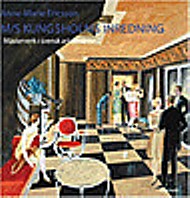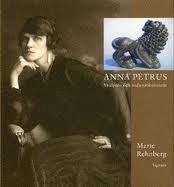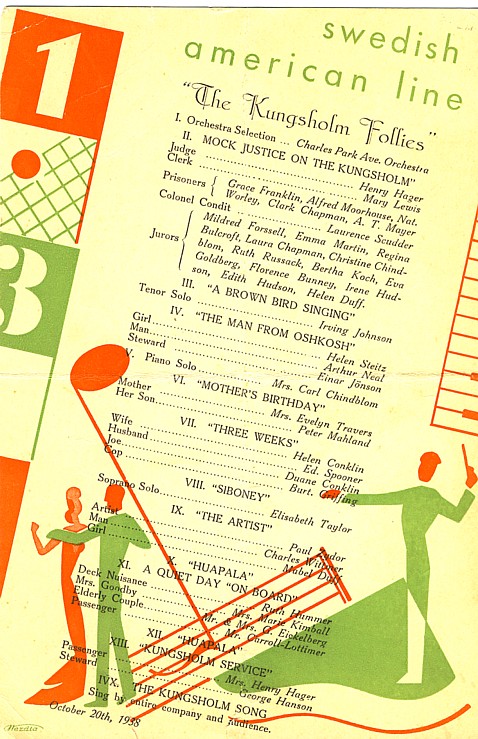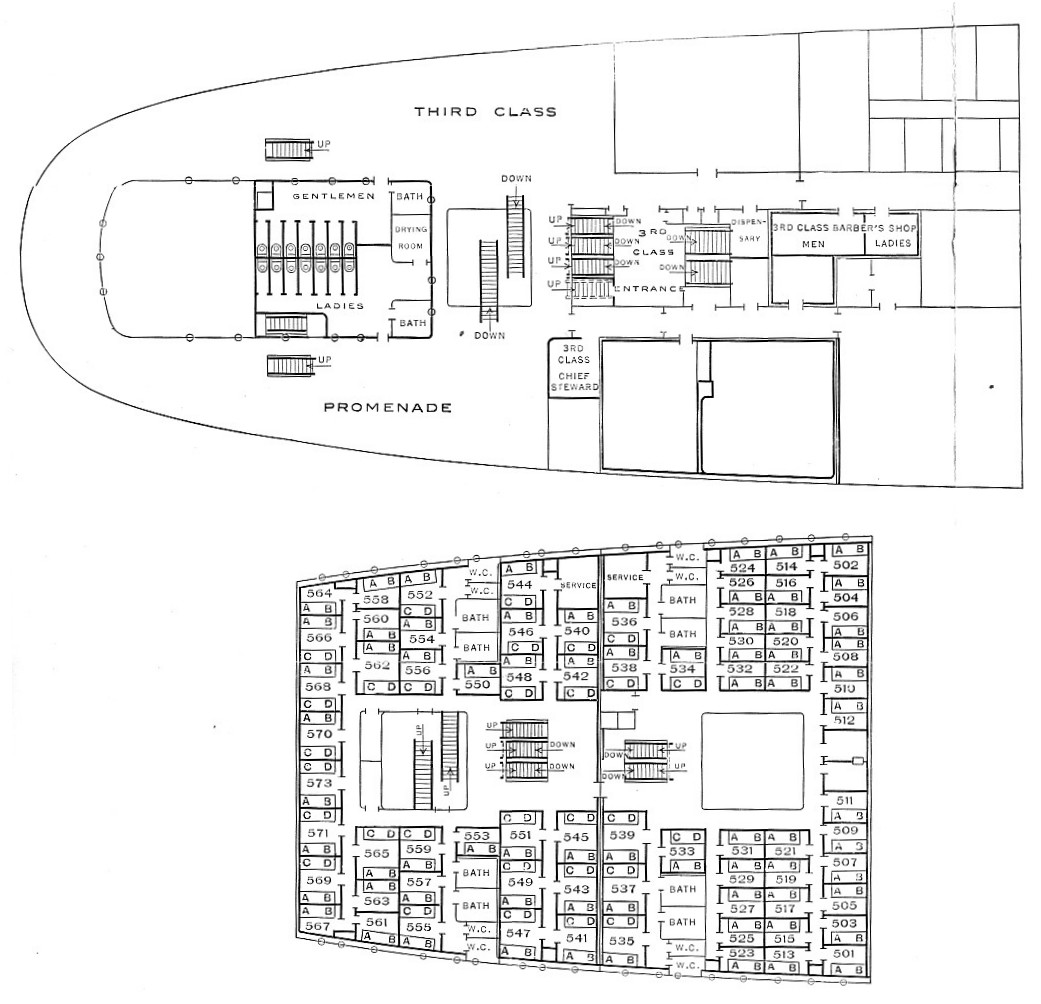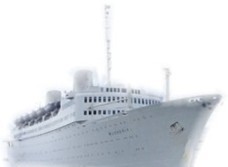 | 
|
| 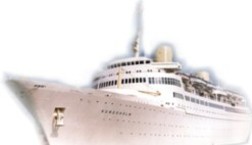 | |||||
A Tribute to the Swedish American Line | ||||||||
| . | ||||||||
| . | ||||||||
| . | ||||||||
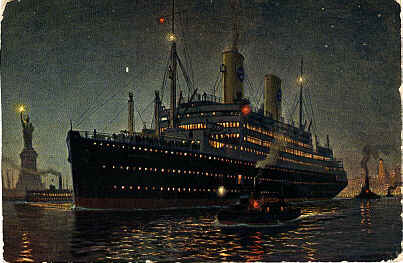
|
| The ships were painted white from 1931 |
There were 3 ships named Kungsholm that were owned by SAL.
| Original name: | S/S Kungsholm |
| Shipyard: | Blohm & Voss, Hamburg, Germany |
| Year: | 1928 |
| Tons: | 21,250 |
| No of passengers: | 1544 |
| Delivered to SAL: | 1928 |
| Sold: | 1941 |
| Sold to: | US Government |
| Renamed: | John Ericsson, 1948 Italia |
| Today: | Scrapped in 1965 |
This famous liner was built in Hamburg in 1928. Her gross registered tonnage was 21,256 and her passenger capacity 1,544. The Kungsholm inaugurated cruises for SAL on January 19, 1929, when she first visited the Caribbean. On January 20, 1940, the Kungsholm made the first South Seas Cruise. The Kungsholm was taken over by the U.S. government on December 12, 1941. On January 2, 1942, the Swedish flag was lowered and the American flag was raised as the vessel was named John Ericsson. During World War II John Ericsson served with distinction as a troop transport in the Pacific, the Mediterranean, as well as during the invasion of France in 1944. She was repurchased by SAL in 1947 and operated by the Home Lines as the Italia. While in Swedish American Line service, the Kungsholm carried 82,745 transatlantic passengers and 58,779 cruise passengers. In 1941, the position of entertainment director for the M.S, Kungsholm of 1928 was held by J. D. Salinger. Mr. Salinger would go on to become a world-renown author with the publication of "The Catcher in the Rye" in 1952. Undoubtedly the Kungsholm's most famous crew member. No doubt he used this experience when writing his short story "Teddy" (republished in his collection Nine Stories) which takes place on an ocean liner.
A Masterpiece of Art Decó Design Although the Kungsholm of 1928 was a masterpiece of Art Decó design, and the architect Carl Bergsten was a Swede, Art Decó was not a typically Swedish style at that period. The style was primarily chosen to suit the American market. A similar design can be found in the Empire State Building. At this period there were two different trends in Swedish design. Carl Bergsten had designed the Swedish pavillion at the 1925 Paris Exhibition, and the Swedish participation had been a great success, especially the display of exclusive Orrefors chrystal glassware. At the same time the Swedish welfare state was evolving, favoring a functional, but attractive, design at a price range the workers could afford. The Kungsholm was a combination of both these trends.
The Art Decó interior was primarily to be found in the first class sections. The first class public rooms were decorated in black, grey, red and gold, with geometrical patterns and Egyptian details. There was a red grand piano in the first class lounge. Grey seal skin was used in some of the tapestry and carpets. The first class smoking room was inspired by the Orient. In the main embarkation hall, there was a round table with an Orrefors glass top, decorated with astrology symbols. The furniture was mostly manufactured at the NK factories in Nyköping, Sweden. As a contrast, and a special feature of the first Kungsholm, was the general upgrading of the third class sections. The dining room had bright colors and tables for four or six persons, instead of the long tables that were customary in third class dining rooms at that period. The public rooms were inspired by Swedish rural life, with much influence from Carl Larsson paintings. When the ship was seized by the US Government in December 1941 (soon to be purchased) and converted into a troup transport ship, furniture was thrown on to the pier in New York. Some objects have been found, such as a mirror that appeared at an auction in New York some years ago. |
Updated April 18, 2013 Art Objects from Kungsholm of 1928 Many thanks to Marie Rehnberg for this information. |
M/S Kungsholms inredning Första M/S Kungsholm, Amerikalinjens stora passagerarfartyg, byggdes på 1920-talet. Det gick mellan Göteborg och New York. Arkitekten Carl Bergsten fick uppdraget att hålla i den påkostade inredningen som skulle visa för världen vad svenska konstnärer kunde åstadkomma. Under andra världskriget togs fartyget i beslag av amerikanarna för att användas i trupptransporten till Europa. Inredningen revs då ner och förstördes. Anne-Marie Ericsson har letat i arkiv och museer efter beskrivningar, ritningar och gamla fotografier för att försöka rekonstruera denna makalösa uppvisning i svensk inredningskonst. |
Anna Petrus var verksam under några intensiva år 1910- och 20-talet. Under lång tid har hon därefter varit bortglömd. Först på senare år har Petrus särpräglade konstnärskap med dess kraftfulla stil åter uppmärksammats. Speciellt gäller det hennes pionjärinsatser som industrikonstnär. Hennes formgivning för Svenskt Tenn och Näfveqvarns Bruk väcker idag internationellt intresse och Svenskt Tenn har fortfarande flera av hennes produkter i sitt sortiment. |
Updated Feb 11, 2010
Donation to The Maritime Museum of Gothenburg  Photo: Olle Andersson Christer Bengtsson, crew member on the Gripsholm 1968-69 and the Kungsholm 1969-70, has informed us about a unique donation to Sjöfartsmuseet, the Maritime Museum in Gothenburg. It is a statue of Venus and a model in relief of the Kungsholm of 1928. Both objects were removed from the Kungsholm in 1941, when she was converted into a troop transport ship, and renamed John Ericson. Read about it here. |
Johan Sjöberg has contributed a link to ShipGeek's color film of a M/S Kungsholm |
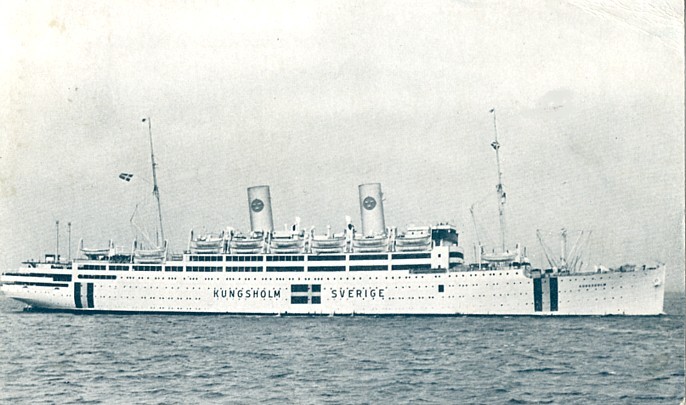 |
"12 1/2 day cruise to Havana, Panama Canal, and Haiti. Really interesting. No submarines in sight. The Kungsholm continued sailing on cruises from the USA to the Caribbean during the first years of WWII, until the USA entered the war in December 1941. This postcard, which features the Kungsholm painted to show her neutral status, was mailed in New York on June 10, 1941. |
|

|
| The Kungsholm Song was written by a passenger in the thirties, and became the ship's official song, sung at the Farewell Dinners. A legendary Chief Purser, Evert Eriksson, made a 78 rpm recording of the song. |
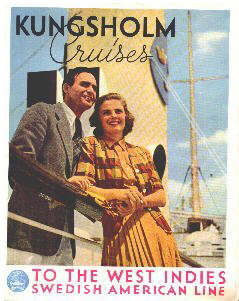
Kungsholm Cruises 1937 |
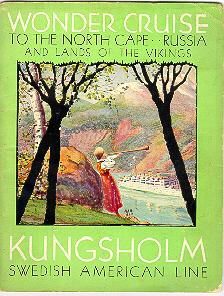
Wonder Cruise to the North Cape, Russia, and Lands of the Vikings, 1938 |
| Contributed by L-O Rydén
| |
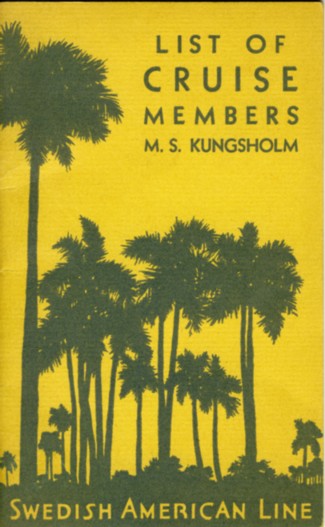 West Indies and South America Cruise January, 1935 Hemingstam collection. |
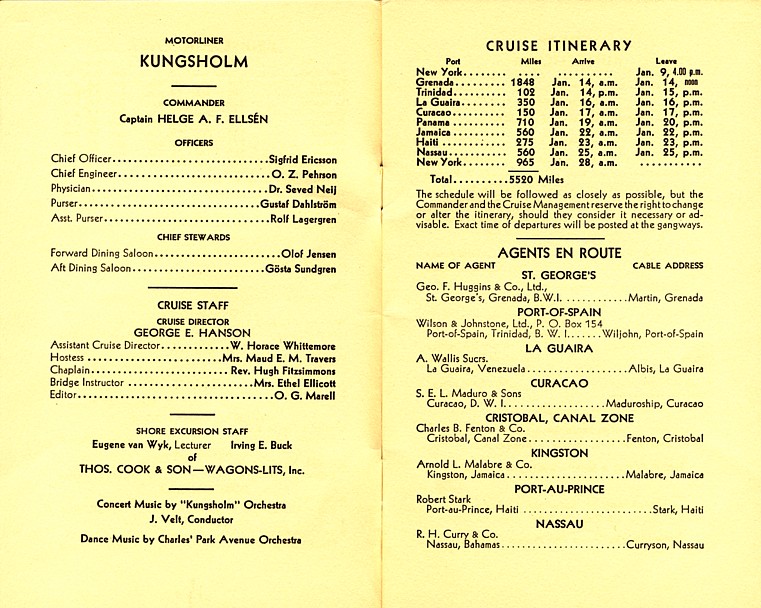 |
| Hemingstam collection. |
The following photos from a Caribbean Cruise in February 1935, have been contributed by
Colonel Edward S. Murphy, USMC Ret., of
Yuma, Arizona.
Kungsholm at Curacao in 1935
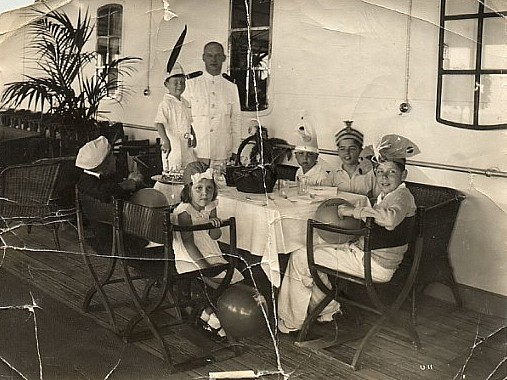
Ed Murphy's (standing) 7th birthday party, Feb 6, 1935.
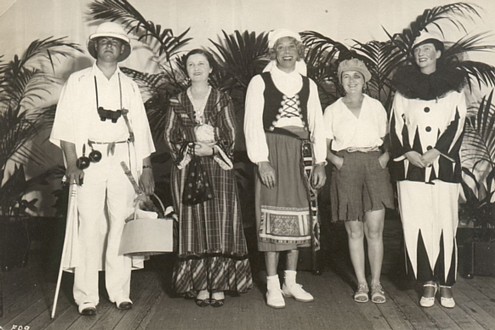
Caribbean Costume party 1935.
Syl Murphy, Anita Wilson Schmidt, Bill Schmidt, Aileen Wilson Murphy, (plus unknown passenger).
The Kungsholm Follies, October 20, 1938.
A show performed by passengers and cruise staff.

Third Cabin Class Menu, June 10, 1935.
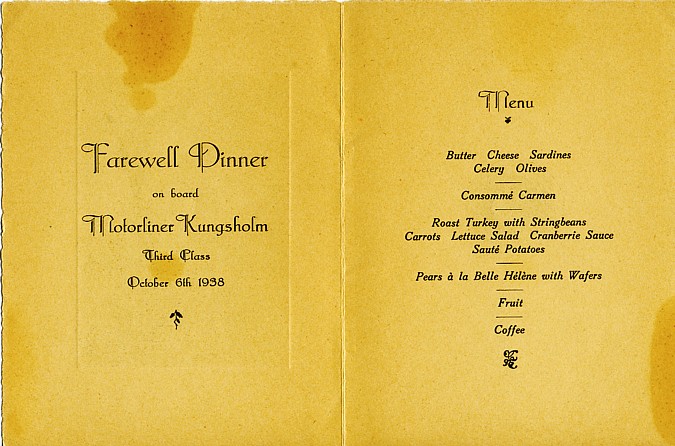
Third Class Farewell Dinner Menu, October 6, 1938.
![]()
Parts of the Third Class accommodation shown below.
Click on the images to enlarge.
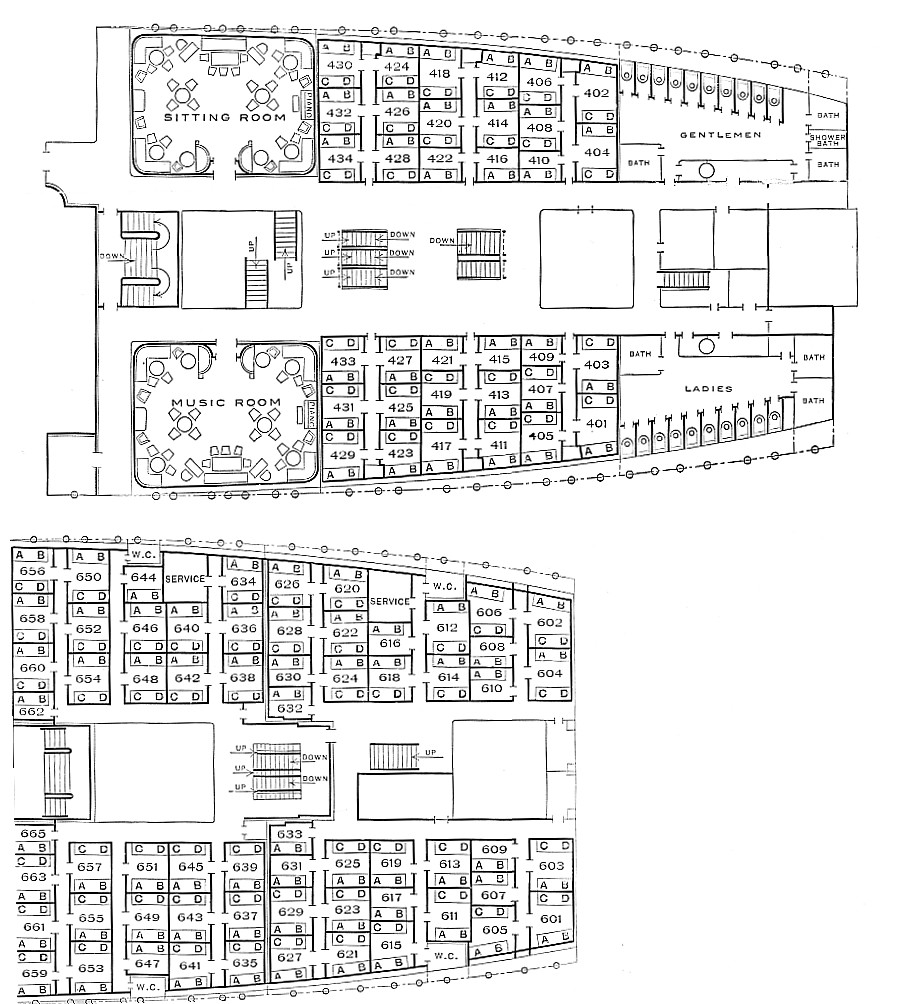 |
|
Excellent site! Don't miss a visit to Henrik Ljungström's and Daniel Othfors' excellent website The Great Ocean Liners, where you can find lots of information about the SAL liners. |
More than 250 web pages developed and maintained by Lars Hemingstam ©1998-2023
Hasse Gustafsson and Tommy Stark have interviewed crew members and contributed many of the stories.
Email us
This site does not use cookies, nor do we save visitors' IP-addresses. We do not send information to any third party. If you find information or a photo about yourself, or a relative, and want do delete it, please email salship@yahoo.com, and the information or photo will be removed. (The General Data Protection Regulation (GDPR) does not apply to deceased persons.) Denna webbsajt andvÀnder inte cookies, vi sparar inte heller besökarnas IP-adresser. Vi skickar ingen information till tredje part. Om du finner information eller ett foto om dig, eller en slÀkting, och vill ta bort det, skriv till salship@yahoo.com sÄ tar vi bort informationen eller fotografiet. (EU-regeln GDPR omfattar inte avlidna personer.) |
The New SAL Guestbook
|
